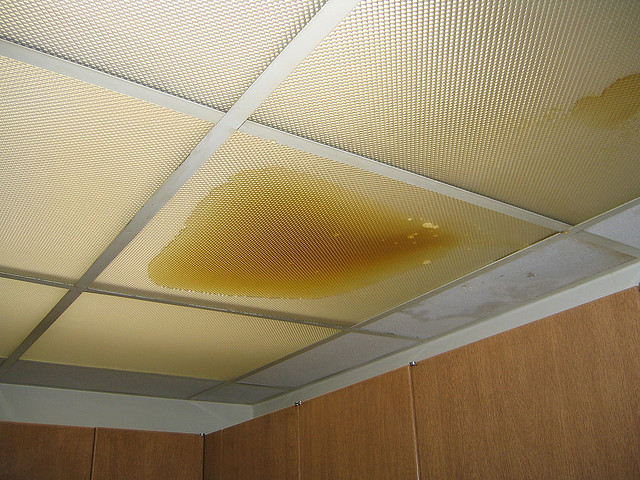Just how to Check If Your Home Has a Covert Leak
Just how to Check If Your Home Has a Covert Leak
Blog Article
In this article in the next paragraph you might get a good deal of high-quality insights when it comes to Hacks to detect leaks.

Early discovery of leaking water lines can mitigate a possible disaster. Some little water leakages may not be noticeable.
1. Examine the Water Meter
Every residence has a water meter. Checking it is a surefire way that assists you discover leakages. For beginners, turn off all the water resources. Make sure no person will purge, use the faucet, shower, run the cleaning device or dishwasher. From there, go to the meter and also watch if it will change. Because no one is utilizing it, there need to be no motions. If it relocates, that indicates a fast-moving leak. If you discover no adjustments, wait an hour or two and check back once again. This indicates you might have a slow-moving leak that can also be underground.
2. Examine Water Usage
If you detect abrupt modifications, regardless of your consumption being the very same, it means that you have leakages in your plumbing system. A sudden spike in your costs suggests a fast-moving leakage.
Meanwhile, a steady boost every month, despite having the very same routines, reveals you have a slow-moving leak that's likewise slowly intensifying. Call a plumber to extensively inspect your home, particularly if you really feel a warm location on your floor with piping below.
3. Do a Food Coloring Examination
30% comes from commodes when it comes to water consumption. Test to see if they are running appropriately. Decline flecks of food color in the tank and wait 10 mins. If the color in some way infiltrates your dish during that time without flushing, there's a leakage between the container and bowl.
4. Asses Exterior Lines
Do not forget to examine your exterior water lines also. Should water permeate out of the connection, you have a loose rubber gasket. One little leakage can throw away loads of water and increase your water bill.
5. Inspect and Analyze the Situation
Home owners must make it a routine to inspect under the sink counters as well as even inside cabinets for any type of bad odor or mold growth. These two warnings suggest a leakage so timely interest is required. Doing regular examinations, even bi-annually, can conserve you from a major trouble.
If you understand your home is currently old, maintain a careful eye on your heaters, tubes, pipes etc. Check for stainings and also deteriorating as many appliances and also pipelines have a life expectancy. They will certainly likewise normally deteriorate because of deterioration. Don't wait for it to escalate if you think dripping water lines in your plumbing system. Call a professional plumber right now so you do not end up with a terrible mess in your house.
Early detection of dripping water lines can mitigate a possible disaster. Some little water leaks may not be visible. Inspecting it is a guaranteed way that aids you uncover leaks. One small leak can squander bunches of water and also increase your water costs.
If you suspect dripping water lines in your plumbing system, do not wait for it to intensify.
How to Know If Your Home Has a Hidden Leak
Water Meter Reveals Inexplicable Water Usage
If you’d like to test whether or not there’s a leak somewhere in your home, you can do this using your water meter. Here is how to conduct the test:
Don’t use any water in your home for at least 30 minutes; this also means not turning on faucets or water-using appliances.
Go outside, and check your water meter for activity.
If your water meter shows that there was activity, even though no one was using any water, this proves that there is a leak in your home.Visible Mold or Mildew Growth
Leaks behind walls create moist, dark environments that allow mold and mildew to grow and thrive. Eventually, you might see mold growth forming on the wall closest to a hidden leak.
If mold is growing in an area that receives a high amount of moisture, such as a bathroom, it may simply be an indication that better ventilation is needed. However, if you see mold growth on a wall or the ceiling in an area where you would not expect, you probably have a hidden leak.
Musty, Mildew Odor
Sometimes you might not be able to see the mold or mildew that is growing as a result of a leak. However, the smell can give the problem away just as easily. If you catch a whiff of something musty, there’s a good chance that old water is collecting somewhere in your home that you can’t see.
Stained/Warped Walls, Ceilings, or Floors
When your home soaks up water, a variety of red flags can become visible, including ceiling stains, bubbling drywall, warped walls, and sagging floors. While these issues can be caused by excess humidity, they can also be signs that a pipe or plumbing connection has started leaking behind your walls.
Inexplicably High Water Bill
After a while, you get a general sense for what your water bill should be. If you own a pool or sprinkler system, your bill will tend to be higher during summer. However, if you receive a water bill that seems especially high, and you can’t figure out what caused it, then you may have a hidden leak somewhere that’s increasing your bill.
https://www.plumbingjoint.com/blog/2019/july/how-to-know-if-your-home-has-a-hidden-leak/

We hope you enjoyed reading our post on Leaking water lines. Thanks for finding the time to read through our post. Do you know about anybody else who is interested by the niche? Take a moment to share it. Thanks for your time invested reading it.
Report this page